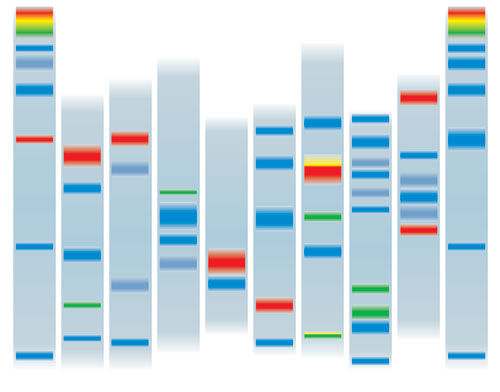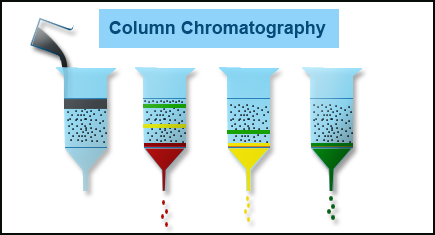Thin Layer Chromatography (TLC): Principle, Procedure & Applications

Thin layer chromatography is a kind of chromatography used to separate and isolate mixtures that are non-volatile in nature. Just like other chromatography processes, this one consists of a mobile phase and a stationary phase.
The latter one here is a thin layer of absorbent material, such as aluminium oxide, silica gel, or cellulose. This layer is applied to plastic, glass, or aluminium foil sheets called an inert substrate. The mobile phase in the TLC procedure is a solvent or a mixture of it.
If you want to learn more about the thin layer chromatography procedure, you have landed at the right place. Here we will be discussing its principle, process, and applications in different industries.
We will begin with the TLC principle.
Thin Layer Chromatography Principle
The separation principle of the TLC procedure is based on the given compound’s relative affinity towards the mobile and the stationary phase. The process begins here by moving the mobile phase over the stationary phase’s surface. During this movement, the higher affinity compounds gain less speed as compared to the lower affinity compounds. This results in their separation.
Once the procedure gets completed, different spots can be found on the stationary surface at distinct levels, reflecting various elements of the mixture. Basically, the compounds that are more attracted towards the stationary phase secure their position at lower levels while others move towards the higher levels of the surface. So their spots can be seen accordingly.
After the TLC principle, now let’s move on to its procedure.
Thin Layer Chromatography Procedure
From the information mentioned above, it must be clear to you how TLC works. However, you still need to learn about its complete procedure to see its entire functioning. A few components involved in the TLC procedure are as follows.
TLC Plates: These are used for applying the thin layer of stationary phase. They are inert or stable in nature. The layer of stationary phase is kept even throughout these plates for better analysis. Usually, ready-to-use plates are preferred by the people conducting experiments.
Mobile Phase: This comprises a solvent (or solvent mixture). The taken solvent needs to be chemically inert, of the highest possible purity, and particulate-free. Only then can the TLC spots be able to develop.
TLC Chamber: This is where the thin layer chromatography procedure takes place. It keeps the dust particles away from the process and does not let the solvent evaporate. In order to develop the spots appropriately, a uniform environment is maintained inside this chamber.
Filter Paper: This gets placed inside the chamber after being moistened with the mobile phase solution. It ensures that the mobile phase rises uniformly throughout the TLC plate’s length.
After collecting all these components, the process begins. Here are the steps followed in it:
- The process starts by making a thin mark on the TLC plate’s bottom with a pencil. It helps in the application of sample spots. These spots are kept at equal distances.
- The sample is then applied to these spots made on the line.
- Then the TLC chamber is filled with the mobile phase up to a few centimetres of its bottom.
- After pouring the mobile phase, the moistened filter paper is placed along with the inside of the chamber wall. This helps to avoid the edge effect by maintaining equal humidity.
- Finally, the prepared stationary phase plate is put inside the chamber. At this point, the sample spots are kept on the mobile phase’s side.
- The chamber is then closed after placing the plate into it.
- Once enough time has elapsed for the process, the plate is taken out and allowed to dry.
- At last, the sample spots get analyzed through a suitable method for the sample, such as UV light, KMnO4 stain, and iodine staining.
This way, the TLC procedure gets completed. After analyzing the compound, it gets described in its relative mobility’s terms, i.e., its Rf value is calculated. This value changes for each compound, even under the same circumstances.
Usually, relative Rf comes into use here because keeping all the TLC factors constant may not be possible. These aspects include adsorbent, temperature, adsorbent thickness, spotted material’s amount, and solvent system. The formula used for Rf value calculation is:
Rf = (distance covered by the sample) / (distance covered by the solvent)
Thin Layer Chromatography Applications
Just understanding the principle and procedure of TLC is not enough. You also need to learn about thin layer chromatography uses to see how and where it works in the real world. Some standard TLC applications include:
- Being a separation process, TLC proves to be highly effective for separating pharmaceutical formulations that consist of multiple components.
- The process can be used to examine a given product’s purity.
- Medicines like local anaesthetics, analgesics, sedatives, hypnotics, anticonvulsant tranquilizers, and steroids go through the TLC procedure for their qualitative testing.
- The cosmetic industry also uses TLC for checking the presence of preservatives in the products.
- A given compound can be purified using TLC and then compared with a standard sample.
- TLC also finds its use in Biochemical analysis. Here, it can be used for biochemical metabolites’ separation from urine, blood plasma, serum, and body fluids.
- Just like the cosmetic industry, the food industry also utilizes TLC for the detection of preservatives, artificial colours, and sweetening agents.
- A reaction’s progress can also get tracked with TLC to see whether it is complete or not.
These were some typical thin layer chromatography applications that you can find at different places. However, the procedure is not limited to these, and you can also see its use in a lot of other industries.
Thin Layer Chromatography Benefits and Drawbacks
Finally, let’s explore some of the benefits and drawbacks of using the thin layer chromatography procedure.
Advantages of TLC
These include:
- The separated spots of TLC can be further visualized without any trouble.
- This chromatography process is cost-effective as compared to other methods.
- It can be used for a number of compounds, and it does not take much time because it is quicker.
- The process is much more straightforward than other methods.
- TLC makes it simple to analyze any given compound’s purity standards.
- Several compounds can easily get isolated through TLC.
Disadvantages of TLC
The drawbacks of the process are:
- The TLC procedure can not be used for lower detection limit experiments because it has a high detection limit.
- The plates used in TLC do not possess a more extended stationary phase.
- Result reproduction is challenging in TLC.
- TLC is limited to qualitative analysis, and it can not be used for quantitative analysis.
- The separation length is also restricted as compared to other chromatography methods.
- The process here does not take place in a closed system. Therefore, aspects like temperature and humidity can affect the results, making them inaccurate.
We hope all this information helped you learn everything about the thin layer chromatography concept.




It’s very simple language what you preform , it help me understand really. Thank you for this.
Thank you for such a simple and great explanation…